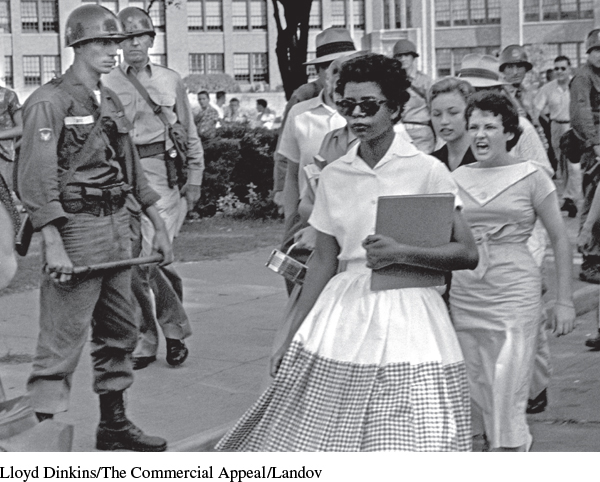Changes in Living Patterns
With larger families and larger family incomes came an increased demand for better housing. The economic and demographic booms encouraged migration out of the cities so that growing families could have their own homes, greater space, and a healthier environment. To meet this demand, the federal government provided Americans opportunities to purchase their own homes. The Federal Housing Administration, created in the 1930s, provided long-term mortgages to qualified buyers at low interest rates. After the war, the Veterans Administration offered even lower mortgage rates and did not require substantial down payments for ex-GIs. The federal government also cooperated by building highways that allowed drivers to commute to and from the suburbs. By 1960 nearly 60 million people, one-third of the nation’s population, lived in suburbs.
William Levitt, a thirty-eight-year-old veteran from Long Island, New York, devised the formula for attracting home buyers to the suburbs. In 1948, Levitt remarked: “No man who owns his own house and lot can be a Communist. He has too much to do.” After World War II, Levitt, his father, and his brother saw opportunity in the housing crunch and pioneered the idea of adapting Henry Ford’s mass-production principles to the housing industry. To build his subdivision of Levittown in Hempstead, Long Island, twenty miles from Manhattan, he bulldozed 4,000 acres of potato fields and brought in trucks that dumped piles of building materials at exact intervals of sixty feet. Specialized crews then moved from pile to pile, each performing their assigned job. In July 1948, Levitt’s workers constructed 180 houses a week, or 36 a day, in two shifts. Mass-production methods kept prices low, and Levitt quickly sold his initial 17,000 houses and soon built other subdivisions in Pennsylvania and New Jersey. With Levitt leading the way, the production of new single-family homes nearly doubled from 937,000 in 1946 to 1.7 million in 1950.
Although millions of Americans took advantage of opportunities to move to the suburbs, Levitt closed his subdivisions to African Americans. Many whites moved out of the cities to distance themselves from the growing number of southern blacks who migrated north during World War II and the influx of Puerto Ricans who came to the United States after the war, and they did not welcome these minorities to their new communities. Many communities in the North adopted restrictive covenants, which prohibited resale of homes to blacks and members of other minority groups, including Hispanics, Jews, and Asian Americans. Although the Supreme Court outlawed restrictive covenants in Shelley v. Kraemer (1948), housing discrimination remained prevalent in urban and suburban neighborhoods. Real estate brokers steered minority buyers away from white communities, and banks refused to lend money to black purchasers who sought to move into white locales, an illegal policy called redlining.

No sections of the nation expanded faster than the West and the South. Attracted by the warmer climate and jobs in the defense, petroleum, and chemical industries, transplanted Americans swelled the populations of California, Texas, and Florida. The advent of air conditioning made it feasible for these new residents to live and work, especially in the hot southern states. California’s population increased the most, adding nearly six million new residents between 1940 and 1960, including a large influx of Asians and Latinos. In 1957, in a sign of the times, New York City lost two of its baseball teams, the New York Giants and the Brooklyn Dodgers, to San Francisco and Los Angeles. This migration to the Sun Belt, as the southern and western states would be called, transformed the political and social landscapes of the nation.
REVIEW & RELATE
How did the conversion from war to peacetime affect the economy, society, and politics in the United States?
What factors contributed to the economic and population growth of the 1950s, and how did they contribute to suburbanization and the growth in the Sun Belt?
Exploring American HistoriesPrinted Page 831
Exploring American Histories Value EditionPrinted Page 612
Chapter Timeline